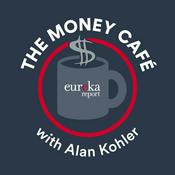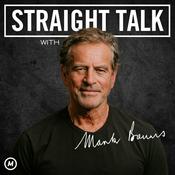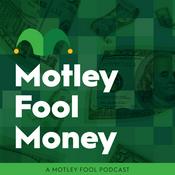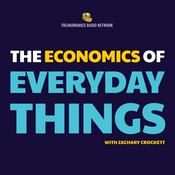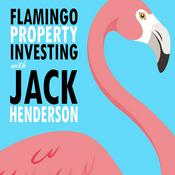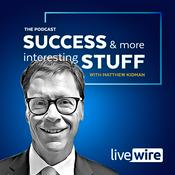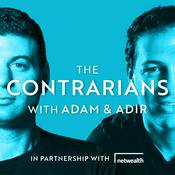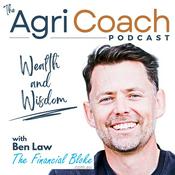46 episodes

Your Brain Is Stealing $245,000 From Your Retirement (Here's How to Stop It)
15/12/2025 | 49 mins.
Here are a few helpful resources from the people who support this show and keep it free for you. Always. If you’ve ever wondered whether you’re doing “fine” with your money or just hoping future-you figures it out, Facet sets you up with a team of expert CFP® professionals who look at your entire financial life — not just your investments, and not just the parts that are fun to talk about at dinner parties. No commissions. No product pushing. Just real advice for one flat annual membership fee. If you're interested in heading into 2026 with a real financial plan from real experts, check out Facet today, here. -- Most people don’t lose money because they pick terrible investments. They lose money because they’re human. In Part 1 of this two-part series on behavioral economics, Tyler walks through the five most common psychological biases that quietly, systematically sabotage investment returns — even when you’re invested in low-cost index funds and “doing everything right.” This episode is about the stuff that happens between your ears. The mental shortcuts. The overreactions. The stories we tell ourselves after the fact. In this episode, we cover: Why overconfidence makes investors trade more and earn less How recency bias convinces us that whatever just happened will keep happening Why we overvalue the investments we already own (even when we shouldn’t) How loss aversion turns normal market volatility into bad decisions Why hindsight bias makes the past feel obvious and the future feel predictable (it isn’t) This isn’t about being smarter than the market. It’s about building systems that protect you from your own instincts — automation, diversification, fewer decisions, and a little less checking. If the show has helped you think differently about money — maybe even made you laugh while doing it — please take 30 seconds to leave a review on Apple or Spotify. It helps more than you think and keeps this whole experiment in free, digestible financial literacy alive and well.

5 Things I Won't Do With My Money in 2026
08/12/2025 | 33 mins.
Here are a few helpful resources, from those who continue to make this show possible for and accessible to you. Visit them today to learn more! To experience what you've been missing by paying rent without getting some amazing rewards along the way, check out how Bilt can help you, here. And if you're like me and have started a small business and don't want to make managing your taxes your SECOND business, explore Gelt today, here. There’s something oddly therapeutic about deciding what not to do with your money next year. Like a financial New Year’s resolution — but with fewer spreadsheets and way less kale. In this episode, Tyler flips the usual “5 things millionaires do” format on its head and shares the five things he refuses to do with his money in 2026. From why he won’t pay off his mortgage early to why high-yield savings accounts aren’t the financial flex you think they are, this episode is all about resisting motion for motion’s sake and reclaiming simplicity in a culture obsessed with doing more. You’ll learn: Why not paying off your mortgage early can actually make you money (hint: opportunity cost). Why high-yield savings accounts aren’t as “safe” or “smart” as they seem — and what to use instead. The trap of saving or investing just to feel responsible, and how to reconnect your money with purpose. Why spending for the sake of deductions is just expensive procrastination (and how to stop doing it). How to keep your portfolio simple — and why complexity almost always costs more than it earns.Tyler reminds listeners that real wealth isn’t about doing more — it’s about doing less, better. This is your invitation to create your own “Not To Do” list for 2026: the habits, purchases, and pressures you’re done with. If the show has helped you think differently about money — maybe even made you laugh while doing it — please take 30 seconds to leave a review on Apple or Spotify. It helps more than you think and keeps this whole experiment in free, digestible financial literacy alive and well.

The $2 Million Portfolio Plan No Advisor Wants You to See
01/12/2025 | 37 mins.
If you’ve ever wondered how to invest $2 million—or any substantial portfolio—without losing sleep, this episode is for you. I break down a simple, historically backed approach: 90% in stocks (VOO/VTI), 10% in a money market fund (SPAXX). This allocation maximizes growth, keeps volatility manageable, and allows you to spend confidently. We challenge conventional wisdom: the 4% rule is too conservative for most retirees. With disciplined withdrawals of $120k–$200k per year, your portfolio can keep pace with inflation, fund meaningful experiences, and still grow over time. Think of it as the financial equivalent of having your cake, eating it, and watching it regenerate. We also tackle the psychology of spending: most retirees underspend, living smaller than necessary due to “consumption gap anxiety.” Intentional withdrawals for travel, family experiences, and “bucket list” adventures can bring more lasting happiness than accumulating wealth alone. Historical context matters: even through market crashes—2008, 2020—you can maintain your lifestyle using a 10% cash buffer. Percentages matter more than principal; the strategy scales from $500k to $20M. And if it's good enough for Buffett's estate...it's good enough for me. Key Highlights: Percentages over principal: 90/10 allocation works for nearly any portfolio size. Withdraw confidently: $120k–$200k/year supports lifestyle while portfolio grows. Spend for experiences: vacations, relationships, and quality of life matter more than hoarding. Liquidity is your friend: 10% in cash lets you ride out crashes without selling stocks. High-stakes bingo: later in retirement, increase withdrawals for “once-in-a-lifetime” experiences. Resources and research mentioned in this episode: William Bengen, 4% Rule (1994) Michael Kitces on dynamic withdrawals Wade Pfau, Safety-First Retirement Planning Bill Perkins, Die With Zero David Blanchett, Retirement Spending Smile If this episode helps you feel more confident about using your money to live well, consider leaving a review on Apple or Spotify. Your feedback helps keep this financial literacy experiment alive. And if you're still feeling stuck and are looking for expert advice for a flat annual membership fee, check out this episode's sponsor, Facet, by going to facet.com/tyler

The Best (And Worst) States to Retire To - Part 2 of 2
24/11/2025 | 28 mins.
Not all “no-income-tax” states are created equal—and some of the states you’ve been avoiding might actually be financial hidden gems. In this second installment of our two-part series on retirement locations, we dive deep into the numbers behind effective tax rates, deductions, and exemptions, revealing which states quietly reward retirees and which can quietly drain your life savings. Highlights from this episode include: The Unexpected Winners: Iowa, Pennsylvania, and New Jersey come out on top for tax efficiency. Yes, New Jersey can be a retirement hero under the right circumstances. The Surprising Losers: Oregon, Minnesota, Hawaii, and New Mexico might make your retirement dream feel expensive, despite gorgeous scenery or “low-tax” branding. Marriage Matters: Married couples can save up to six percentage points in taxes—enough to turn a modest nest egg into a significantly more comfortable retirement. Why Effective Tax Rate is King: Forget slogans and state income tax lists. The only number that really matters is what you actually pay after all deductions, exemptions, and costs are considered. But beyond taxes, and this is primarily why I made this a two-parter, we explore why happiness, community, and lifestyle often matter more than the spreadsheets. Retiring in a state just because it looks cheap might save you a few dollars but cost you your sense of home. The best retirement state balances financial security with quality of life. If you enjoyed this episode, leave a review on Apple Podcasts or Spotify, or share it with a friend planning their retirement. And if you missed Part 1, we highly recommend listening to last week’s episode to get the full story on The Great Tax Mirage and why “no state income tax” can be misleading. And if you're interested in learning more about this week's sponsors, the amazing companies who allow this free content to get to you week after week after week, check them out here: For the single best electrolytes drink I have found to drive and sustain my energy on a daily basis: drinklmnt.com/tyler And for those small business owners who are as overwhelmed as I am about learning the ins and outs of optimizing our taxes: joingelt.com/tyler

The Best (And Worst) States to Retire To - Part 1 of 2
17/11/2025 | 27 mins.
Everyone will tell you to move to Florida or Texas to retire tax-free. But the truth? Taxes are more complicated than a “No State Income Tax” billboard. In this first part of a two-part series, we unpack The Great Tax Mirage and reveal why some so-called high-tax states like New Jersey, Pennsylvania, and Iowa may leave retirees with more money in their pocket than the sunny paradises they’re fleeing. We dive into Fidelity’s latest study modeling retirees withdrawing $100,000 a year from an IRA and show how effective tax rates—what you actually pay after exemptions and deductions—can dramatically flip conventional wisdom on its head. For example, a couple retiring in Oregon might pay close to 13% in effective taxes, while a move to Iowa could drop that number to 7.5%, potentially growing tens of thousands of dollars over a decade. We also explore the underrated power of marriage in retirement planning. Married couples filing jointly can save around six percentage points on combined federal and state taxes versus singles—enough to add tens of thousands of dollars to a nest egg over ten years. Key takeaways from this episode include: No state income tax doesn’t automatically mean you keep more money. Certain high-tax states offer exemptions and deductions that outperform so-called tax havens. Marriage can be one of the most powerful retirement tax strategies. Your effective tax rate—not the headline rate—determines what you actually keep. Planning where to retire is about life satisfaction as much as taxes. Whether you’re dreaming of beaches, cornfields, or just a comfortable, worry-free retirement, this episode will change the way you think about where your money—and your life—goes next. Part Two drops next week, where we’ll rank the best and worst states for retirees, explore the real impact of marital magic, and dig into other often-overlooked factors that matter more than taxes when choosing where to spend your golden years. If you enjoy the show, please leave a review on Apple Podcasts or Spotify and share it with a friend who’s plotting their retirement escape. It helps more than you know—and makes sure that no one accidentally retires somewhere that quietly nibbles their nest egg.
More Business podcasts
Trending Business podcasts
About Your Money Guide on the Side
Listen to Your Money Guide on the Side, The Money Puzzle and many other podcasts from around the world with the radio.net app
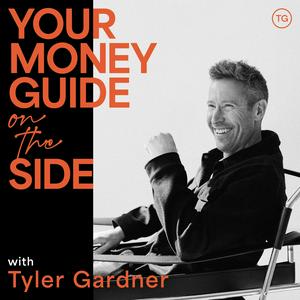
Get the free radio.net app
- Stations and podcasts to bookmark
- Stream via Wi-Fi or Bluetooth
- Supports Carplay & Android Auto
- Many other app features
Get the free radio.net app
- Stations and podcasts to bookmark
- Stream via Wi-Fi or Bluetooth
- Supports Carplay & Android Auto
- Many other app features


Your Money Guide on the Side
download the app,
start listening.




